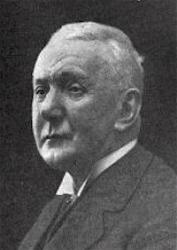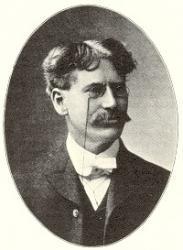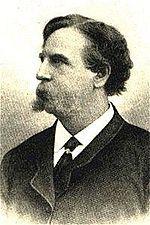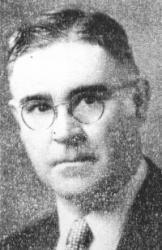Planning worship?
Check out our sister site, ZeteoSearch.org,
for 20+ additional resources related to your search.
- |
User Links
Person Results
Robert Prescott Stewart
1825 - 1894 Person Name: Sir Robert Stewart, Mus. D. Composer of "MOUNT CALVARY" in Children's Hymnal
Robert Prescott Stewart
Robert Jackson

1840 - 1914 Person Name: R. Jackson Composer of "ST. LEONARD" in The Congregational Mission Hymnal After receiving his musical training at the Royal Academy of Music, Robert Jackson (b, Oldham, Lancashire, England, 1840; d. Oldham, 1914) worked briefly as organist at St. Mark's Church, Grosvenor Square, in London. But he spent most of his life as organist at St. Peter's Church in Oldham (1868-1914), where his father had previously been organist for forty-eight years. A composer of hymn tunes, Jackson was also the conductor of the Oldham Music Society and Werneth Vocal Society.
Bert Polman
Robert Jackson
J. B. Herbert

1852 - 1927 Composer of "[There is a green hill far away]" in Praise and Worship Hymns
J. B. Herbert
L. G. Hayne
1836 - 1883 Composer of "ST. BERNARD" in Church Hymnal Born: February 28, 1836, St. David’s Hall, Exeter, England.
Died: March 3, 1883, Bradfield, Essex, England.
Son of Richard Hayne, Rector of Mistley, Leighton graduated from Eton and Queen’s College, Oxford (BMus 1856, DMus 1860); at school, he was Eton College’s organist and conducted the Oxford University chorus. He also served as chaplain of Queen’s College; Vicar of Helston, Cornwall (1866-67); Succentor of Eton (1867-71); and Rector of Mistley, Essex (1871-83), and was well known as an organ builder.
Music:
BUCKLAND
CHALVEY
ST. CECILIA
ST. LAWRENCE
--www.hymntime.com/tch/
L. G. Hayne
Richard Storrs Willis

1819 - 1900 Composer of "[There is a green hill far awayl]" in Westminster Sabbath School Hymnal, a collection of hymns and tunes for use in sabbath-schools and social meetings Richard Storrs Willis (February 10, 1819 – May 10, 1900) was an American composer, notably of hymn music. One of his hymns is "It Came Upon the Midnight Clear" (1850), with lyrics by Edmund Sears. He was also a music critic and journal editor.
Willis, whose siblings included Nathaniel Parker Willis and Fanny Fern, was born on February 10, 1819, in Boston, Massachusetts. He attended Chauncey Hall, the Boston Latin School, and Yale College where he was a member of Skull and Bones in 1841.
Willis then went to Germany, where he studied six years under Xavier Schnyder and Moritz Hauptmann. While there, he became a personal friend of Felix Mendelssohn. After returning to America, Willis served as music critic for the New York Tribune, The Albion, and The Musical Times, for which he served as editor for a time. He joined the New-York American-Music Association, an organization which promoted the work native of naturalized American composers. He reviewed the organization's first concert for their second season, held December 30, 1856, in the Musical World, as a "creditable affair, all things considered".
Willis began his own journal, Once a Month: A Paper of Society, Belles-Lettres and Art, and published its first issue in January 1862.
Willis died on May 7, 1900. His interment was located at Woodlawn Cemetery.
His works and music compilations include:
Church Chorals and Choir Studies (1850)
Our Church Music (1856)
Waif of Song (1876)
Pen and Lute (1883)
--en.wikipedia.org
Richard Storrs Willis
George Kirbye
1565 - 1634 Person Name: G. Kirbye Composer of "WINDSOR" in The Academic Hymnal George Kirbye (c. 1565 – buried October 6, 1634) was an English composer of the late Tudor period and early Jacobean era. He was one of the members of the English Madrigal School, but also composed sacred music.
Little is known of the details of his life, though some of his contacts can be inferred. He worked at Rushbrooke Hall near Bury St Edmunds, evidently as a tutor to the daughters of Sir Robert Jermyn. In 1598 he married Anne Saxye, afterwards moving to Bury St Edmunds. Around this time he probably made the acquaintance of John Wilbye, a much more famous madrigalist, who lived and worked only a few miles away, and whose style he sometimes approaches. In 1626 his wife died, and he is known to have been a churchwarden during the next several years until his death.
Kirbye's most significant musical contributions were the psalm settings he wrote for East's psalter in 1592, the madrigals he wrote for the Triumphs of Oriana (1601), the famous collection dedicated to Elizabeth I, and an independent set of madrigals published in 1597. Stylistically his madrigals have more in common with the Italian models provided by Marenzio than do many of the others by his countrymen: they tend to be serious, in a minor mode, and show a careful attention to text setting; unlike Marenzio, however, he is restrained in his specific imagery.
Kirbye avoided the light style of Morley, which was hugely popular, and brought into the madrigal serious style of pre-madrigal English music. He is not as often sung as Morley, Weelkes or Wilbye, but neither was he as prolific; still, some of his madrigals appear in modern collections.
--en.wikipedia.org/wiki/
George Kirbye
Gioacchino A. Rossini
1792 - 1868 Person Name: Rossini Composer of "MANOAH" in The Church Porch Gioacchino A. Rossini; b. 1792, Pesaro; d. 1868, Ruelle near Parise
Evangelical Lutheran Hymnal, 1908
Gioacchino A. Rossini
Berthold Tours
1838 - 1897 Person Name: Berthold Tours (1838- ) Composer of "GOUDA" in Carmina Sanctorum, a selection of hymns and songs of praise with tunes
Berthold Tours
William Vincent Wallace
1812 - 1865 Person Name: William V. Wallace Composer of "SERENITY" in Junior Hymns and Songs
William Vincent Wallace


 My Starred Hymns
My Starred Hymns



